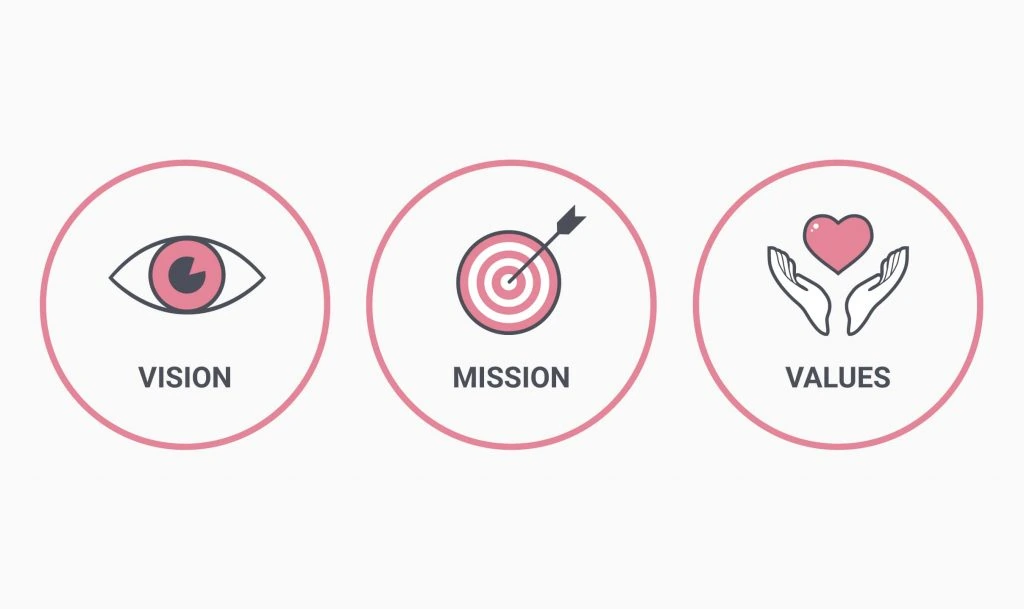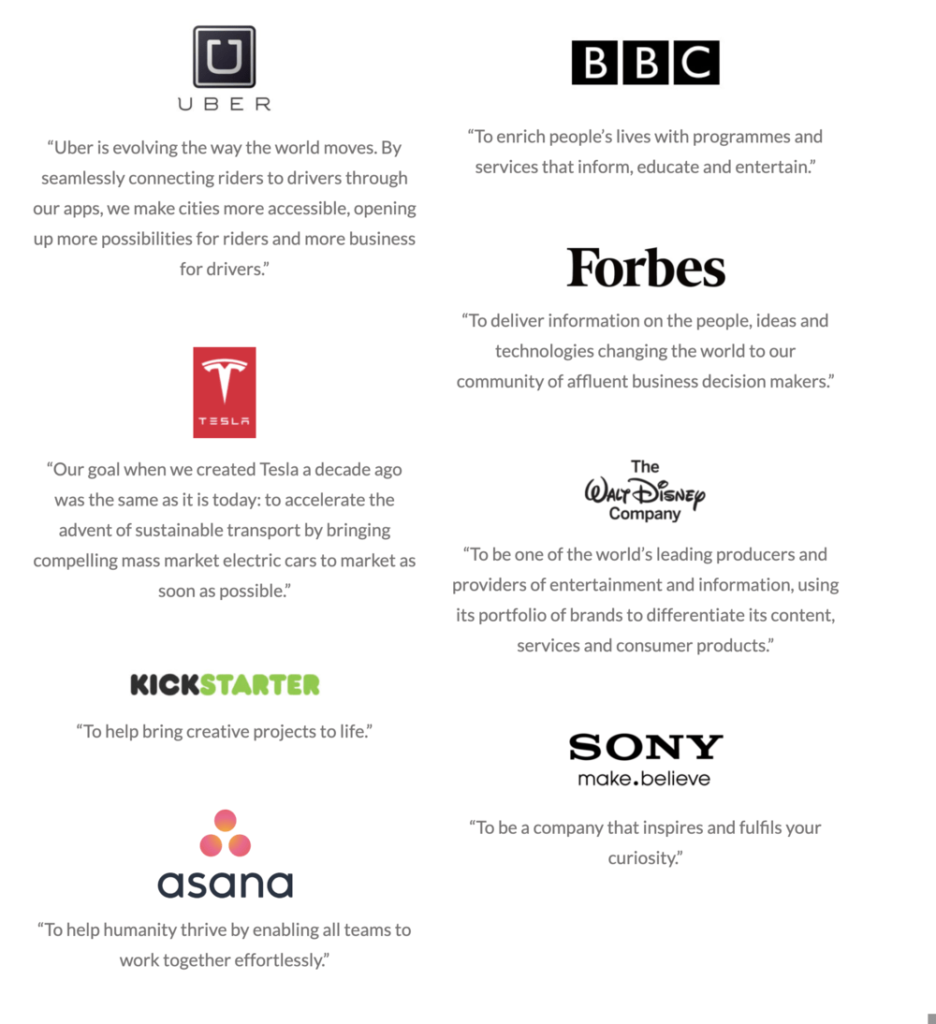How to Craft a Powerful Vision Statement (And Why It Matters)
Let us begin with the basics. A vision statement is a bright forecast of the future you desire for your business, non-profit organisation or any other establishment. It is all about creating a graphic image of your long-term dreams and objectives.
See it as what guides all your strategic decisions and daily operations. This is why creating an appealing vision statement matters most because it;
- It gives clarity and direction to all people within the organisation
- Motivates your team by inspiring them to achieve big things
- Sets you apart from other players in the market while at the same time showcasing what makes you unique
- It brings individuals together plus aligns resources around shared dreams
Your vision statement should be short but sweet. In most cases, only one or two sentences capture what your organisation wants to be or do in simple terms. So don’t be afraid to dream big!
Table of Contents
Why Your Company Needs a Vision Statement

Is having a vision statement worth it? Imagine leading a crew through unknown waters; how will one navigate such stormy seas without some form of (or any) vision?
A compelling destination over the long term acts as a rudder for an organisation; without this, everything becomes disjointed – decisions are made haphazardly, resources are wasted, and there is floundering. But when armed with vivid visions expressed powerfully through words known as statements like these here – then there’s something around which everybody can get behind.
The best visions are also great PR & marketing tools: they tell potential customers, investors, partners, etc., concisely precisely where we want them to help us go. That’s powerful!
Consider famous examples such as “To make people happy” by Disney or Ikea’s “To create a better everyday life for many people.” These few words alone instantly communicate their driving purposes.
Two Main Types of Vision Statements
Most organisations use two main types of vision statements. Let’s break them down:
1. Vision Statements That Look Inward
An inward-facing vision concerns the organisation's future — what position it seeks to achieve or what reputation it aspires for. This describes who they hope to become and where they want to be.
Examples:
- “To be the world’s most sustainable manufacturer.”
- “A place where our employees can thrive and reach their full potential”
- “The most trusted brand in data security solutions”
The benefit of having an inside look at things is clarity; there’s little room left for interpretation regarding what success looks like. However, one downside could be appearing self-centred if not counterbalanced with external impact.
2. Vision Statements That Look Outward
An outward-facing vision statement expresses how you want to positively change the world around you. It envisions a better state brought about by your offerings, services or advocacy work.
Examples:
- “A world without hunger.” (The Hunger Project)
- “Bringing inspiration and innovation to every athlete in the world.” (Nike)
- “Enabling the digital revolution by delivering cutting-edge semiconductor technologies” (Nvidia)
Creating this kind of vision grounds what your organisation does within society or its sector; such broad horizons may serve as rallying points for teams who otherwise need more direction due to mixed priorities or limited resources. But then again, words like “global” risk coming off too vague or grandiose
So, How Do You Write a Powerful Vision Statement?

Ready to capture your vision in a simple but inspiring statement? Here's a step-by-step guide:
1. Discovery: Get Clear on Your Purpose
Before dreaming up your ultimate vision, you need clarity on your organisation's core purpose, beliefs, and values. These foundational elements should shine through in your vision.
One enlightening exercise: Finish the sentence “Our organisation exists to…” Come up with multiple completions until you've nailed your fundamental reason for being.
Another exercise is to list all your stakeholders – customers, employees, partners, etc. Then, spell out the unique value you provide to each constituent. This input can directly shape your outward-facing vision.
2. Define Your “Envisioned Future.”
With your purpose firmly in mind, it's time to articulate that future ideal state you want to create. Ask yourself:
- What does success look like 10, 20, or 50 years from now?
- What positive impact do you want to achieve in the world?
- What will be different because your organisation achieved its fullest potential?
Jot down descriptive phrases capturing your long-term aspirations. Don't censor yourself – dream as big and bold as you can! You'll refine and condense it later.
3. Identify Your Driving Force
Every powerful vision has an emotional core driving it forward. Pinpoint the fundamental human desire, need, or passion that fuels your vision.
Is it:
- Improving people's lives or making the world better?
- Pushing boundaries through innovation and creativity?
- Protecting people, nature, or vital resources?
- Providing enjoyment, beauty, or positive experiences?
Connect your envisioned future to this animating force. It will give your vision statement weight and inspire others.
4. Study Exemplary Vision Statements
Many stumble – failing to study other outstanding vision statements for inspiration and best practices. Great artists learn from masters, and great visionaries should, too!
Some top-notch examples to analyse:
- “To make people happy” (Disney)
- “To be a teacher” (Oprah Winfrey's OWN network)
- “To organise the world's information” (Google's founding vision)
- “To accelerate the world's transition to sustainable energy” (Tesla)
See how concise yet powerful these statements are. Notice how they convey a noble purpose, paint an envisioned future, and stir emotion. Let them inspire (but don't copy!) your own.
5. Be Specific, But Not Too Specific
It's a tricky balancing act – making your vision vivid and concrete enough to be meaningful while allowing flexibility as your organisation evolves.
On the one hand, a statement like “To be the best company” is too vague and uninspiring. Conversely, “To produce 1 billion gadgets annually by 2032” is overly narrow.
Your sweet spot? Focus your vision on the fundamental purpose, the aspirational “why,” and the core value or experience you provide. Just stay away from hard metrics or hyper-specific outcomes.
The more longstanding and universally resonant your vision, the better. After all, it should still motivate decades from now!
6. Distill and Refine
You've explored, brainstormed, and gathered tremendous input by now. Time to craft that shining vision statement!
Look through all your notes and attempt to capture the essence in 7-15 words. Yes, you read that right – most iconic vision statements are concise yet profound.
Here are a few tips:
- Use straightforward, inspiring language
- Incorporate vivid, future-oriented words like “create,” “empower,” and “revolutionise.”
- Evoke positive emotion and stir people's passions
- Use the “infinite” form of verbs to convey an enduring vision
- Consider using literary techniques like alliteration or metaphor to make it catchy
This distilling process takes work! You may draft a dozen versions before landing on one that's simple yet powerful, memorable yet open-ended.
Once you have a polished draft, run it by others whose feedback you trust. Make any final tweaks, then embrace your new vision statement!
Rolling Out Your New Vision Far and Wide

Creating a vision statement is just the beginning. You want this statement to permeate every aspect of your organisation and its public presence.
Start by formally unveiling and celebrating the new vision within your company. Promote it across internal channels – meetings, email signatures, office decor, schwag, etc. Ensure all employees understand and connect with this, guiding your efforts.
Next, share your vivid vision with the world! Feature your statement prominently on your website, marketing materials, investor presentations, social media, and more. Interweave references to it in speeches, announcements, and external messaging.
Your bold vision statement should be ubiquitous and top-of-mind whenever people interface with your brand. Your organisation becomes unstoppable When everyone is marching towards that transcendent future state.
Writing Workshop: Draft Your Vision Now
Thanks for reading, but you're not done yet! Immerse yourself fully in the vision statement writing process with this hands-on exercise:
- Clear your purpose by completing: “Our organisation exists to…” in multiple ways.
- Identify the driving emotional force behind your vision. Is it enriching lives, fueling innovation, or protecting something vital?
- Study exemplary vision statements like Disney's, Google's, Tesla's, and OWN's to identify what makes them compelling.
- Start drafting – aim for a concise 7-15 word statement capturing your purpose, envisioned future, and driving force.
- Refine your draft using vivid language, the infinite verb form, and techniques like metaphor to make it inspiring yet open-ended.
- Get feedback and iterate until you have a profound yet simple statement.
If you engage authentically, you'll emerge with a rough vision statement draft to build upon. Rome wasn't built in a day, but this exercise kickstarts your journey!
Making Your Vision a Reality

Crafting a bold vision statement is vital but only the first step. The true challenge lies in manifesting that envisioned future through diligent effort and intelligent strategy.
Your vision guides all significant decisions, plans, and initiatives going forward. Use it as a filter to evaluate priorities – anything not aligned with or propelling the vision gets deprioritised.
Some critical next steps:
- Establish measurable long-term goals mapping to your vision
- Infuse vision-upholding values throughout your culture
- Craft strategies to tangibly pursue the vision over the years
- Align teams, budgets, and OKRs to critical vision-driven objectives.
- Celebrate wins demonstrating vision progress
- Course-correct when you veer from the visionary path
Most of all, communicate and evangelise the vision relentlessly! Let it inspire people daily. When everyone is united in passionate pursuit of that transcendent future state, your probability of realising the vision skyrockets.
Revisiting and Evolving Your Vision Statement
Even the most brilliant vision statement can become stale or outdated as your organisation and the world evolves. Revisit and refresh your vision regularly – I'd recommend every five years, at a minimum.
Questions to reflect on:
- Does our stated vision still capture our highest aspirations and driving purpose?
- Make our strategic direction and day-to-day efforts remain aligned with this vision.
- Is the vision still inspiring and resonating with all stakeholders, internally and externally?
If the answer is “no” to any of the above, thoughtfully start the vision statement rewriting process again from square one. Gather fresh input, redefine your purpose if needed, and craft a new rallying cry for the future.
The most outstanding visionary leaders and organisations remain dynamic. They continually re-envision an even bolder, more ambitious future to strive for. By refreshing your vision statement, you rekindle inspiration to scale new heights.
Frequently Asked Questions
What's the difference between a vision and a mission statement?
A vision statement outlines the future you aspire to create – your loftiest aspirations and grandest ambitions. On the other hand, a mission statement focuses on your present plan to realise that vision. It defines the “how” you'll pursue that future through actions and initiatives.
Do I need both a vision and a mission statement?
While not strictly required, it's highly recommended to have both. The vision paints an inspiring picture to galvanise people, while the mission sets the concrete path for getting there—the two work in concert, with the mission serving the higher-level vision.
How long should a vision statement be?
Vision statements should be concise – 7-15 words or a very brief sentence or two at most. Any longer, they become too confusing or convoluted to inspire people. Memorable brevity is critical.
Can a vision statement change over time?
Absolutely! While a robust, enduring vision has incredible staying power, no organisation should forever cling to an outdated or misaligned vision. As your company evolves, so should your aspirational vision for the future. Most organisations refresh their vision statements every 5-10 years.
Who should be involved in creating a vision statement?
Ideally, you'll get input from all key stakeholders – founders, executives, board members, employees, investors, partners, and possibly customers. An inclusive process leads to a unifying vision behind which everyone can rally.
Should we have separate vision statements for different divisions?
For most companies, it's best to have a single, overarching vision statement for the entire organisation. To maintain unity, divisional or team objectives/missions can stem from that higher-level corporate vision.
My company already has a vision statement, but no one cares. Help!
This is a common pitfall – companies create a vision statement, then let it gather dust. Combat this by weaving the vision into your culture and communications relentlessly. Reference it constantly, celebrate wins tied to it, and connect the vision to people's roles. Make it meaningful and top-of-mind.
Are there any major mistakes to avoid when writing a vision?
Yes! Don't make your vision too narrow, specific, or loaded with numbers – that stifles inspiration. Don't copy others' visions verbatim – yours must be unique. And avoid jargon or buzzwords that lack substance. Keep it simple, aspirational, and true to your organisation's values.
What's the next step after finalising our vision statement?
Roll it out internally through meetings, communications, office branding, etc. Get people excited and aligned around this new guiding vision. Then, it is infused externally into marketing, messaging, and customer interactions. Finally, tie goals, plans, and initiatives directly back to manifesting the vision.
Can a vision be too lofty or unrealistic?
While confidence is reasonable, over-ambition can backfire and make your vision feel disingenuous or unrelatable. Strike a balance between bold yet believable. Anchoring your vision to your fundamental purpose and stakeholder value helps keep it grounded yet aspirational.
There you have it – a comprehensive walkthrough on vision statement writing! You'll blaze an inspiring path towards an even greater future by capturing your aspirations in a compelling, resonant statement.
